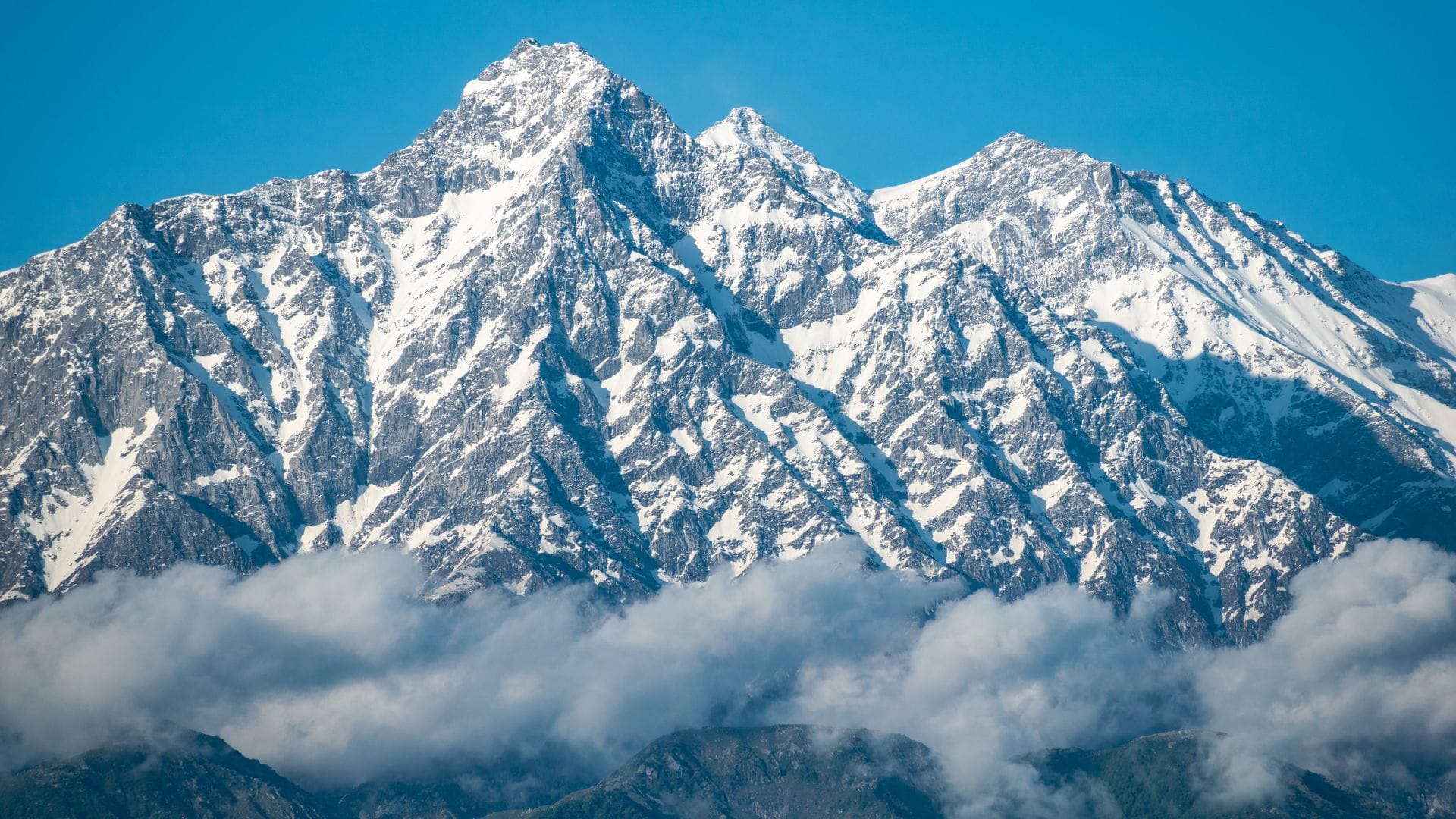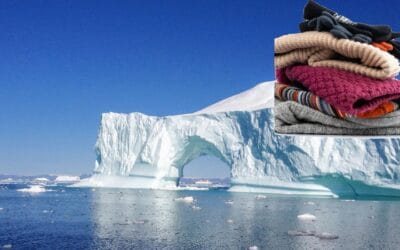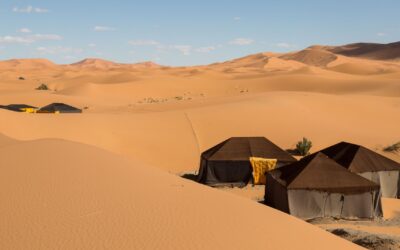Imagine standing atop a mountain, gazing at a panorama that includes snow-capped peaks and alpine meadows. Cool, right? Sure, the higher you go, the thinner the air becomes, and sometimes you might feel that each step feels like you’re wading through molasses. When oxygen levels drop, you might experience headaches, nausea, and dizziness. These considerations should not stop you, however, from climbing high peaks. To make things somewhat easier, I have prepared a guide that should help you get ready for trekking at high altitudes, be it easy mountains to climb or the most challenging peaks in the known world.
Consider training before you go
Embarking on a high-altitude trek is like preparing for a dance—sometimes you need to practice your moves, and other times you can just wing it. Engaging in cardiovascular activities like jogging, cycling, or even brisk walking can help prepare your lungs and heart for the reduced oxygen levels at higher altitudes. However, if you’re already active and can climb a flight of stairs without gasping for air, you might be good to go.
As you likely know, the mind is an important gear. High-altitude treks can be mentally taxing, with unpredictable weather and challenging terrains. A good attitude can make a world of difference. Do your best to enjoy the experience even when you are having expected or unexpected challenges
Some people may actually benefit from practicing mindfulness or meditation before trekking a challenging peak. These techniques may help you stay calm and focused, especially when you’re questioning your life choices mid-trek.
Pay attention to clothes and footwear
Dressing in layers allows you to adjust to fluctuating temperatures, much like peeling an onion.
- Base Layer: Opt for moisture-wicking materials to keep sweat at bay. Synthetic fabrics or merino wool are good choices.
- Mid Layer: This is your insulation. Fleece jackets or down vests work wonders to trap body heat.
- Outer Layer: A waterproof and windproof shell protects you from the environment. Look for breathable materials..
Your feet also need your attention.
- Hiking Boots: Have ready sturdy, well-fitted boots with good ankle support. Waterproofing is a plus or a must, in particular when traversing snowy or wet terrains.
- Break Them In: New boots can be unforgiving. Wear them on shorter hikes to avoid blisters and discomfort during your trek.
Finally, let’s mention a few accessories.
- Hats and Gloves: A warm hat and insulated gloves can help you prevent heat loss. Remember, you lose a significant amount of heat through your head and hands.
- Sunglasses: This is how you protect your eyes from the sun’s glare, especially when it’s reflecting off snow. Look for UV protection to keep your peepers safe.
- Sunscreen: At higher altitudes, the sun’s rays are more intense. Consider applying sunscreen.
- Trekking Poles: These provide stability and reduce strain on your knees.
Climb slowly
Think of trekking as a slow dance with the mountain. Rushing to higher altitudes is a recipe for Acute Mountain Sickness (AMS), thanks to the thin air at elevation. Moving slowly allows your body to acclimatize without turning your trek into an unplanned drama. Consider using the technique Climb High, Sleep Low, which means ascending to a higher altitude during the day and returning to a lower altitude to sleep. This approach helps your body adapt without overexertion
- Pace Yourself: Limit your elevation gain to 500-700 m (19,600-27,500 ft) per day, typically translating to about 5-6 hours of hiking. This gives your body the breathing room it needs to adjust.
- Plan Smartly: Build rest days into your itinerary for acclimatization, making sure the thin air doesn’t turn you into a gasping mess.
Pay some attention to nutrition
Feeding your body properly at high altitudes is quite important in some treks, as high elevation comes with burning more calories than the average. This means you’ll need to eat more than usual to keep up. Plan to consume around 3,000-5,000 calories per day, depending on the intensity of the trek and your individual needs. Carbohydrates require less oxygen to metabolize than fats or proteins, making them a good energy source at altitude.
Lightweight, calorie-dense snacks can come in handy for quick energy boosts. Examples include:
- Trail Mix: A mix of nuts, seeds, and dried fruits provides a perfect balance of carbs, protein, and healthy fats.
- Energy Bars: Choose bars with at least 200 calories and minimal artificial ingredients.
- Dried Fruits and Chocolate: Quick energy with a touch of sweetness to keep your spirits high.
When it’s time to eat, focus on meals that are easy to prepare and packed with nutrients. Avoid heavy food, as it can be tough to digest at altitude. It’s typically best to stick to light, easily digestible foods to keep your energy up.
Don’t forget to hydrate
At high altitudes, the air really dry, and staying hydrated is important.
- How Much? Aim for 3-4 liters (quarts) of water per day. Perhaps carry water bottles and a CamelBak-style water bladder for convenience.
- Be Eco-Friendly: Use water purification tablets or a filter instead of buying plastic bottles, as there are no recycling facilities in remote areas.
Try to avoid cigarettes and alcohol
Cigarettes and alcohol make it harder for your body to cope with low oxygen levels. If you smoke or drink, start cutting back during your training phase in case you are planning to trek a challenging peak.
Take the right medicine
To be prepared for everything, don’t forget to have a first help kit aid. You may need antibiotics, painkillers, Paracetamol, Ibuprofen, Aspirin, and cough lozenges. In extreme altitudes where oxygen levels are dangerously low, supplemental oxygen in the form of oxygen tanks or cans can be vital.
Pay attention to your “feelings”
Altitude can be categorized into distinct zones:
- High Altitude: 2,438–3,658 m (8,000–12,000 ft). At this level, mild effects such as shortness of breath and increased heart rate may begin to manifest.
- Very High Altitude: 3,658–5,486 m (12,000–18,000 ft). The risk of AMS increases, with symptoms like headaches, nausea, and dizziness becoming more common.
- Extreme Altitude: Above 5,486 m (18,000 ft). Significant oxygen deprivation occurs, necessitating professional preparation and often supplemental oxygen.
If you notice symptoms of AMS—headache, nausea, dizziness, or shortness of breath—report them to your guide immediately, if you have one. Consider using a pulse oximeter if possible. Healthy oxygen saturation levels vary by altitude, so keep an eye on the numbers:
- < 1350m (4,429 ft): 90-95%
- < 2800m (9,186 ft): 85-90%
- < 4000m (13,123 ft): 80-83%If you have severe symptoms descend immediately to a lower elevation. The mountain will still be there when you’re ready.
If you encounter snow…
Trekking through snow certainly has its charm, but it’s also more dangerous, sometimes considerably more so. Snowy adventures demand extra attention to your clothing and, like always, layers are your best defense against the cold. Keep your feet dry and warm with insulated, waterproof boots. Gaiters will help you stop snow from sneaking into your shoes.
Layering strategy for snowy conditions:
- Base Layer: Moisture-wicking to keep you dry.
- Mid Layer: Fleece or down to trap heat.
- Outer Shell: Windproof and waterproof.
You will also want to have insulated gloves, a snug hat, thermal socks, and some sunglasses or goggles—snow glare is kind of blinding.
If you’re heading into avalanche-prone areas, educate yourself about the risks. Tools like an avalanche beacon, probe, and shovel can be lifesavers. That being said, going into avalanche-prone areas is a very bad idea. Please don’t do it.
If it’s really hot…
Embarking on a high-altitude trek doesn’t always mean braving the cold (well, depending on how high we’re talking). In some regions, the sun turns up the heat, making your adventure feel more like a desert expedition. When this happens:
- Opt for moisture-wicking, breathable materials like synthetic blends or merino wool. These fabrics help keep sweat at bay and allow for better airflow
- Wearing light-colored clothing reflects sunlight, keeping you cooler than darker hues.
- Sweating leads to the loss of essential salts. Incorporate electrolyte tablets or sports drinks to maintain balance and prevent cramps.
- If circumstances allow it, start your hike at sunrise and take a long break during midday when the sun is at its fiercest. Resume trekking in the late afternoon as temperatures drop.
- Use natural shade for rest stops, and if none is available, consider carrying a lightweight tarp for temporary relief.
Bottom line: Having fun at high altitudes often requires a bit of preparation
Effectively handling high-altitude climbing can be an important trekking survival skill. For some, hiking at high altitudes requires limited effort, at least when the treks are not particularly difficult. For others, the experience is not just exciting but also one that requires mastering balancing physical endurance and mental resilience. For those in the second category and probably for anyone going for a challenging trek, the key takeaway is that you are likely going to have fun as long as you know what to expect and sometimes even when you don’t.









